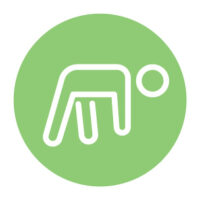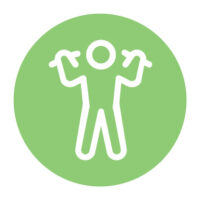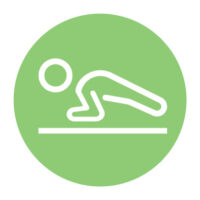Tips for Safe Summer Fun
Stay Safe with Sunscreen, Sunglasses and Plenty of Water
The longer, sunshine filled days of summer are upon us and without a doubt, they are one of life’s unrivaled joys, especially when you protect yourself from the powerful impact of ultraviolet rays. With that in mind, we share our tips for safe summer fun; from choosing and using the right sunscreen to staying hydrated.
The debate around sunscreen safety heated up with last year’s recall of some popular consumer products containing chemicals such as benzene, which is absorbed through the skin and into the bloodstream. Yet according to the FDA, the American Academy of Dermatology and other experts, there is minimal evidence that systemic absorption of these ingredients is toxic or harmful to health. There is, however, a mountain of proof regarding the harmful effects of sunburn – most notably its significant contribution to the risk of melanoma.
“Use of a broad-spectrum, SPF 30 sunscreen effectively blocks UVB and UVA rays to prevent sunburn,” says Dr. Andrea Murina, MD, associate professor of dermatology at Tulane University School of Medicine and director of the University Medical Center’s dermatology clinics. “This not only reduces the risk of developing skin cancer but also decreases signs of early aging on your skin (such as wrinkles, age spots, sagging skin) and stops existing melasma from darkening and new patches from appearing.”
According to Dr. Murina, while we know some ingredients in sunscreen do cross over into the bloodstream, most are rated by the FDA as GRASE, meaning generally recognized as safe and effective.
A bit of background: Earlier studies conducted by the FDA showed that common chemical ingredients used in sunscreen, including oxybenzone are absorbed into the bloodstream.
Further research on whether systemic absorption of oxybenzone was an actual concern was suggested. However, no clear links to any health problems in humans were identified.
Nevertheless, the ingredient has been eliminated from most sunscreens currently being manufactured, making it easy to find an oxybenzone-free product.
When applied correctly, a water-resistant, SPF 30 sunscreen is optimal, blocking 97% of UVB rays. “A higher SPF is fine, but only incrementally blocks more rays, and the time and duration of effectiveness is the same,” says Murina.
The best way to protect yourself is by using a combination of measures:
- Wear sun-protective clothing, including a lightweight, loose-fitting, long-sleeved shirt, pants, a wide-brimmed hat and sunglasses. Darker colors, densely woven cloth, unbleached cotton and shiny polyesters are recommended by the Skin Cancer Foundation.
- Judiciously apply broad-spectrum sunscreen every two hours on uncovered body parts, such as top of hands, face, neck and ears.
- Swap out regular SPF 15 foundation for a tinted sunscreen. “There are so many cosmetically elegant ones available today that mimic the look of makeup but offer much more protection,” says Murina. Tinted sunscreens with an SPF of 30 or higher provide protection that blends well with all types of natural skin tones, and help prevent exposure to both UV rays and visible light from the sun.
- Seek shade when the sun’s rays are strongest, between 10:00 a.m. and 2:00 p.m.
Like sunscreen, sunglasses are vital in blocking the harmful effects of UV radiation. UVA and UVB rays can cause increased risk of conditions such as cataracts, eye cancers and growths on the eye, as well as premature aging of the delicate skin around your eye. Choose sunglasses that block 99% or 100% of all UV light or are listed as having UV absorption up to 400nm. Wear them even when it’s hazy or cloudy, as UV light can pass right through clouds. And although you’ve undoubtedly heard this piece of advice before, it bears repeating: To protect your retina, never look directly at the sun.
Finally, drink up when you’re out in the sun. Water is the elixir of choice, helping to lower your body temperature and replace the fluids you lose through sweating. This is particularly important for older adults whose body’s fluid reserve becomes smaller and thirst sense decreases as they age. Be aware of the most common signs of dehydration – lightheadedness, fatigue, dizziness, less frequent urination, dark-colored urine – and rehydrate promptly with cool water.
Safe Travels
If your summer vacation includes international travel, we recommend some healthy pre-planning that includes the following:
- COVID-19: Make sure you are up to date with your vaccines and boosters. Get tested for COVID-19 as close to the time of your departure as possible (no more than three days before travel). Do not travel if you have COVID-19 symptoms, if you tested positive or if you are in quarantine due to possible exposure.
- Check the U.S. Centers for Disease Control and Prevention (CDC) and the World Health Organization (WHO) websites for the most up-to-date travel alerts, advisories and recommendations. Immunizations needed will vary based on your health condition, immunization history, countries and regions on your itinerary, and duration of your visit.
- Update your routine immunizations to protect against increased risk of exposure to illnesses such as seasonal flu, diphtheria, varicella (chickenpox), measles, mumps and rubella. For quick guidance on additional immunizations you may need, try the online tool at GlobalTravEpiNet.
- To protect yourself from the serious diseases spread by mosquitos, such as dengue fever and malaria, bring an EPA-registered insect repellent with an active ingredient like DEET or picaridin.
- Pack your prescription medications and consider bringing over-the-counter medicines, including anti-diarrheal medicine, antacid, antihistamine, hydrocortisone cream, motion sickness medicine, cough medicine, pain and fever medicine, and mild laxative.
- Also, pack supplies to prevent illness or injury, such as hand sanitizer, water purification tablets, insect repellent and sunscreen; and first aid items such as antibacterial ointment, antiseptic wound cleanser, aloe gel, insect bite cream, a digital thermometer and bandages.
We encourage you to contact your health care provider four to six weeks prior to your trip for personalized guidance … and we wish you a safe and memorable journey!
Sources: FDA, American Academy of Dermatology, Mayo Clinic, American Academy of Ophthalmology, U.S. Centers for Disease Control and Prevention, Skin Cancer Foundation




 1.
1.  2.
2.  3.
3.  4.
4.  5.
5.  6.
6.  7.
7. 










